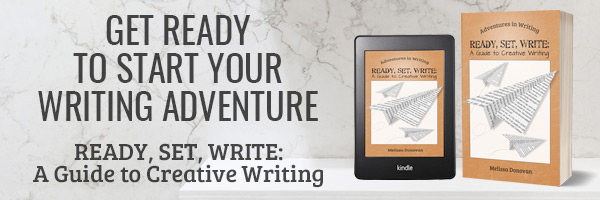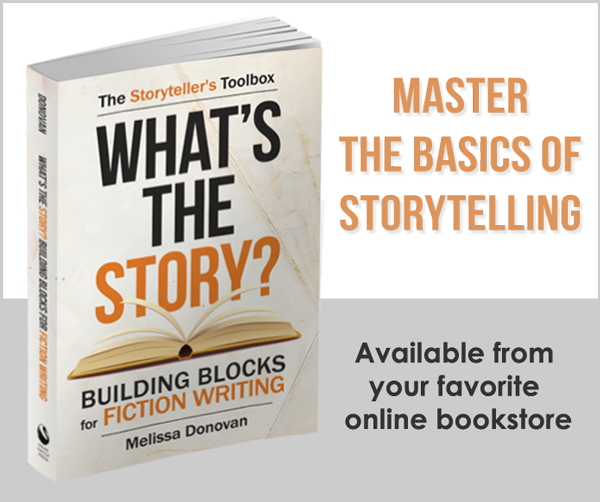Lots of writers feel restricted by rules and constraints. I’ve seen writers rail against constraints ranging from the submission guidelines on an agent’s website to the specifications of a creative writing exercise. I once witnessed a rant by an author whose story didn’t fit into any genre that could be found on Amazon (or in any other bookstore).
Some people want to create in an environment of unbridled freedom. We all have this option as we create, but once we step out into the world, we have to deal with the systems that are in place.
In order to help readers find books they’ll like, bookstores need genres. In order to find clients efficiently, agents need to establish guidelines. And by definition, a writing exercise is deigned to provide parameters for you to work within.
But here’s what surprises a lot of writers: constraints can actually enhance creativity when applied properly.
Let’s look at a few creative constraints that have the potential to boost (rather than hinder) your creativity.
Examples of Constraints That Boost Creativity
Perhaps the most obvious creative constraint for writers is form poetry, which gives us clear — and often strict — guidelines for constructing a poem. Form can tell us how many lines or stanzas a poem should have, how many syllables should be in a line, and it can provide a rhyme scheme. Compare this to free-form poetry, in which there are no constraints whatsoever. A haiku, for example, occupies three lines: the first line is five syllables, the second line is seven syllables, and the final line is five syllables. (For a more detailed look at the structure of haiku, check out my post on writing haiku.)
Some constraints are less concrete that those provided by form poetry. For example, we often assign word counts to various forms of fiction. You’ll find varying opinions on where the cutoffs are, but as an example, flash fiction tends to be under 1,500 words; short stories are 1,500 to 30,000 words; and novellas 30,000 to 50,000 words. If you set out to write a short story (and especially if you want to get it published), you’ll need to work within these constraints and keep it under 30,000 words.
Perhaps the most dynamic constraint that writers encounter is in genre, for the constraints in this realm are many and varied. For example, let’s say you want to write a romance novel, but your love story has a tragic ending. Guess what? You’re not writing a romance. You’re writing a tragedy (you could also call it a drama or literary fiction, perhaps). You might want to write a book that will end up in the romance aisles at your local bookstore, but that tragic turn of events will relegate your book to the contemporary fiction aisle. You’re going to need to change the ending or accept that your story is not a romance. These are the constraints you must work within.
However, most constraints are self-imposed. For example, you might decide to alternate between two characters’ viewpoints in your novel. Or perhaps you decide to publish a series of six-word stories on Twitter.
Can you think of any other constraints that writers often encounter or impose upon themselves?
Benefits of Constraints
If you’ve ever cracked open a fresh notebook or launched a new document in your word processor, you know the blank page can be overwhelming and intimidating. Even if you have a sense of what you want to write, it can be difficult to find those first few words.
In an article titled “Creativity: How Constraints Drive Genius” at Forbes, we’re introduced to Architect Frank Gehry, who built the Guggenheim Museum in Bilbao, Spain and the Disney Concert Hall in Los Angeles.
Constraints, in fact, are so crucial to creativity that Gehry names one of his greatest architectural challenges as the time he was asked to design a house with zero constraints.
Gehry described the experience of working without constraints as “horrible.” The article goes on to say the following:
Constraints give us a starting point and some building blocks to work with—a problem to solve, an innovative twist to be revealed, or a person to please. And, it doesn’t matter how tightly constrained we feel. The world is filled with amazing possibilities derived from limited resources and elements. Consider the fact that every color in nature comes from just red, yellow and blue. Yet, we can mix them together in millions of combinations…Constraints? Absolutely, But they’re a starting point for seemingly endless creativity and possibility.
Here are a few benefits of working within constraints:
- Constraints can increase creativity and innovation.
- Constraints provide a frame of reference or starting point.
- Constraints sometimes force us to be consistent.
- Constraints give us something to rebel against.
Can you think of any other benefits that constraints can provide to creativity?
What Are Your Constraints?
Do you prefer to work without constraints, or do you find that some constraints can function as guides that move you through a project and boost your creativity? Share your thoughts on constraints and creativity by leaving a comment, and keep writing!






As a memoir writer, my constraint is to write about things and events which actually happened, and in that regard when I’ve been unsure, I have checked on facts via various means.
However, one night I had a dream which was incredibly vivid and amazingly realistic (for my dreams!) to the point of being something which could so easily have happened. So I wrote it out and decided to include it in the memoir I was writing at the time.
Before publishing I had my kids read through my MS, given that they featured greatly in it, and at the end asked them if they knew which event did not, in fact, happen. None of them could work it out.
Of course, I have no intention of introducing non-facts into my writing again. This was definitely a one-off and It remains my secret!
That’s interesting, Ann. Kind of a fun exercise to see if anyone can guess what’s a dream and what’s real. Thanks for sharing that.